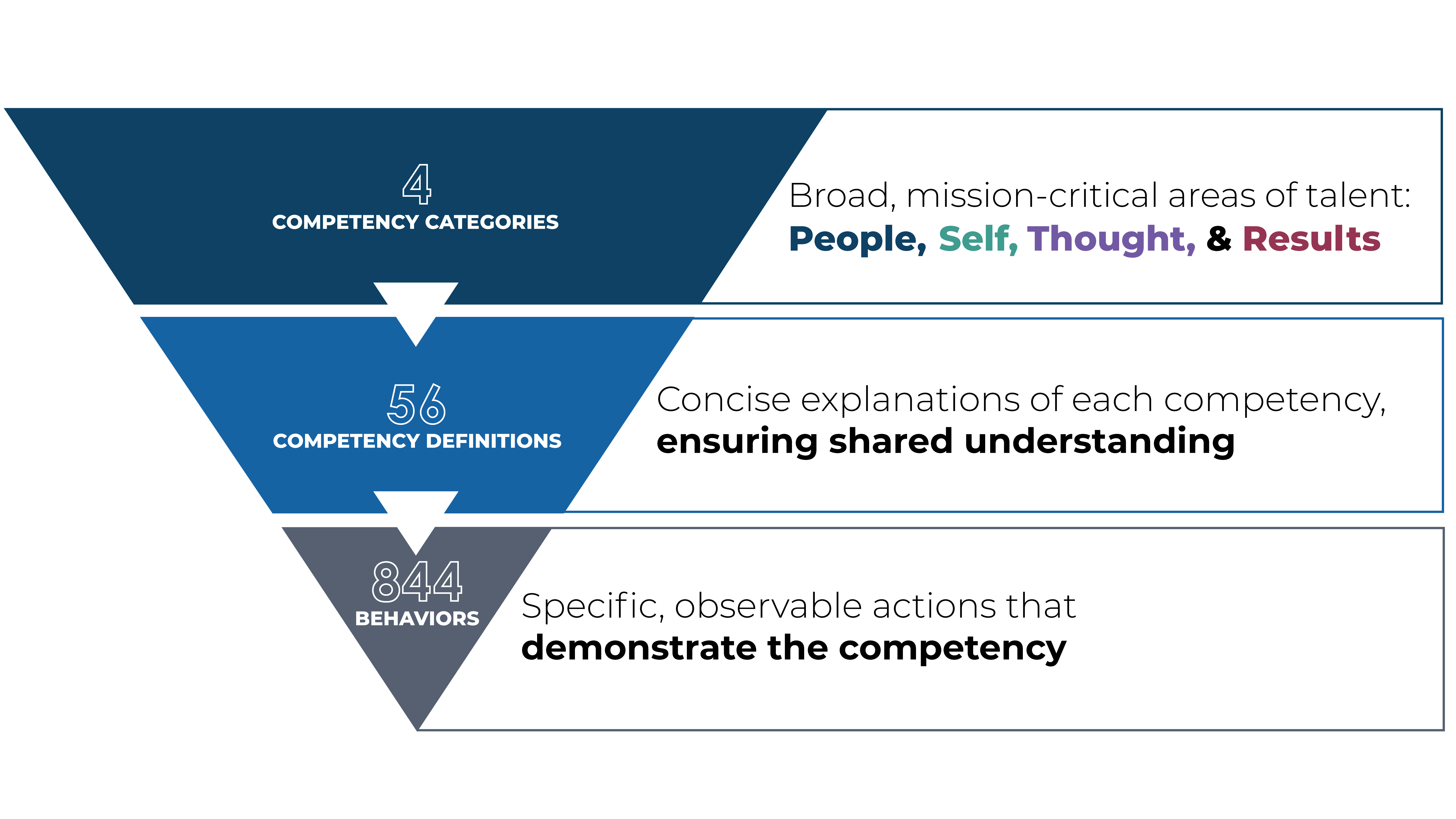|
|
Louisiana Competency Model
The Louisiana Competency Model is a modern, practical guide to building and supporting our current and future public workforce.
The Louisiana Competency Model creates a common language for skills by defining the behaviors that show what success looks like on the job.
This clarity makes it easier to recognize, develop, and apply competencies across the entire employee lifecycle.
This shift is about more than words on a page. It is about creating a shared language for growth, performance, and service.
By focusing on behaviors:
- Employees know exactly what success looks like and how to grow in their roles
- Supervisors gain simple, concrete tools to coach, develop, and evaluate performance
- Agencies strengthen hiring, training, and workforce planning with consistency across the state
The Louisiana Competency Model keeps skills and actions at the center and ensures that Louisiana's public workforce remains strong, reliable, and ready to deliver for every citizen, every day.
This is more than a model. It is a living framework that helps us all put skills into action.

The Four Competency Categories
The Louisiana Competency Model also provides a common language for how we talk about talent.
It begins with four broad, mission-critical areas: People, Self, Thought, and Results.
These four categories create a balanced view of talent by combining people skills, personal accountability, critical thinking, and results that drive public service.
These areas are further broken down into 56 distinct competencies, creating a shared understanding of the skills required for State service.
Why the Competency Categories Matter
The Louisiana Competency Model begins with four broad categories that capture the full range of skills needed for success in public service. These categories serve as the foundation for the 56 competencies and provide a simple way to organize how we talk about talent.
Each category highlights a different dimension of performance, from how we work with others, to how we manage ourselves, to how we think through challenges, to how we deliver results.
Together, these categories provide a balanced view of what talent looks like. They ensure that the competency model does not just emphasize technical expertise,
but also values the people skills, personal accountability, and problem-solving abilities that make public service work.
This category centers on communication skills, collaboration, empathy, and relationship building.
It’s about how well individuals interact with others and contribute to team dynamics.
This category encompasses personal development, emotional intelligence, and professionalism.
It focuses on how well individuals understand and manage themselves.
This category emphasizes critical thinking, problem solving skills, innovation, and adaptability.
It’s about how individuals process information and approach challenges.
This category focuses on goal orientation, productivity, and the ability to deliver tangible outcomes.
It's about achieving meaningful results and making a measurable impact.
The Behaviors
Each competency in the Louisiana Competency Model is brought to life through specific, observable behaviors.
These behaviors show what success looks like in practice and make the competency model easy to use in everyday work.
Our competency model is built on a 5-level foundation to capture the full range of performance from forming to exceptional.
That structure provides rigor, consistency, and alignment with research standards.
For practical use we have operationalized 3 levels. Three anchor points are easier to apply consistently across agencies while still showing a clear path for growth.
- Forming signals that support is needed.
- Successful confirms solid and reliable performance.
- Exceptional recognizes those who model excellence and set the standard for others.
This approach balances the credibility of a 5-level model with the clarity and fairness of a 3-level system that everyone can understand and apply.
By reviewing the behaviors, employees can see how to grow in their roles, supervisors can give clear and consistent feedback, and agencies can align hiring, development, and performance management.
We invite you to familiarize yourself with the behaviors associated with each competency.
Why Behaviors Matter
Behaviors are the core of the Louisiana Competency Model because they connect competencies to action. They provide a clear way to:
- Hire based on demonstrated skills
- Onboard with transparent expectations
- Develop through targeted feedback and growth
- Evaluate performance fairly and consistently
- Identify mobility and career opportunities
By focusing on behaviors, The Louisiana Competency Model turns abstract skills into practical tools for every stage of the employee lifecycle.
Forming
- Struggles to demonstrate the competency without guidance
- Attempts the behavior but shows gaps in skill or understanding
- Behaviors may be inconsistent, incomplete, or not yet effective
Improving
- Transitional phase
- Demonstrates the competency in some situations with partial success
- Shows growth and increasing confidence with practice
- Behaviors are present but not yet consistent or reliable
Successful
- Independently demonstrates the competency in routine situations
- Performs reliably and with confidence
- Behaviors are consistent and meet expectations
Exceeds
- Transitional phase
- Applies the competency independently in challenging or broader situations
- Contributes added value or insight through actions and decisions
- Strengthens outcomes for the team or organization
Exceptional
- Demonstrates expertise in high-stakes situations where outcomes have significant consequences
- Serves as a role model and example for others
- Elevates standards and outcomes through contributions
Click on a competency below to see behaviors.
* An asterisk denotes a state leadership competency.
|